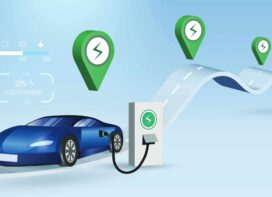 In his special address at the TrafficInfraTech Conference in September 2017, Anil Srivastava, Adviser (Infrastructure Connectivity), NITI Aayog talked about the shift which is taking place from the conventional internal combustion engine to the zero-emission vehicle. In the next 10 to 20 years, the electric car market is expected to transit from early deployment to mass market adoption. So, what are the challenges and what is the direction the Industry should take?
In his special address at the TrafficInfraTech Conference in September 2017, Anil Srivastava, Adviser (Infrastructure Connectivity), NITI Aayog talked about the shift which is taking place from the conventional internal combustion engine to the zero-emission vehicle. In the next 10 to 20 years, the electric car market is expected to transit from early deployment to mass market adoption. So, what are the challenges and what is the direction the Industry should take?
One of the studies by Bloomberg predicts that, by 2040, 54% of the cars which will be manufactured would be electric cars and in 2030 it will be around 30%.
Globally by 2040, one-third of the fleet would be electric vehicles.
The graph does not talk about India, it just says rest of the world. This is in spite of the fact that India is the fastest growing market in terms of the passenger cars and in terms of mobility. Our requirement for mobility is the most but the current mobility of the citizen is the least. The average size of a trip in India is 5kms, miniscule compared to the developed economies. The growth of the economy is 7% but then the challenge is how do we move towards increasing our share in terms of the zero emission vehicles.
 Globally, by 2025, there would be price parity between the electric vehicles and the internal combustion engine vehicles. But the shared services can make more productive use of capital investments, and could reduce the number of vehicles on the road in 2030 by 10%. There is probably the challenge of having one additional lane every three years has to be looked into. How do we try to go to a position where this is not really required, and the solution is shared?
Globally, by 2025, there would be price parity between the electric vehicles and the internal combustion engine vehicles. But the shared services can make more productive use of capital investments, and could reduce the number of vehicles on the road in 2030 by 10%. There is probably the challenge of having one additional lane every three years has to be looked into. How do we try to go to a position where this is not really required, and the solution is shared?
The prices of electric vehicles will go down because the price of battery will go down whereas the price of conventional vehicles will go up and that is how we will achieve the price parity.
The projection for India by Indian associations and Indian bodies say that with about 9% of CAGR, the figure for 2026 would be 75 million vehicles, out of which more than 13 million vehicles would be passenger vehicles. Our scenario would be probably more than the optimistic because of the way things are moving and the way economy is growing, and the way need is perceived.
The global figures show that by 2030, the total Light vehicle market will be 103 million, out of which the 24% will be EVs and in 2040 the share will be 54% .
Present Status
 If the world is moving in this direction, then how can India be very different from it? Today, India is integrated with the global requirement of mobility. So, when we extrapolate it downwards, the size of the electric vehicles in India would be 7.14 million, and by 2040, the number of passenger cars manufactured in India in the electric segment or the zero-emission segment will be more than the conventional cars. India is moving along with other countries and the world average and this is the biggest disruption which is going to take place in the automobile sector.
If the world is moving in this direction, then how can India be very different from it? Today, India is integrated with the global requirement of mobility. So, when we extrapolate it downwards, the size of the electric vehicles in India would be 7.14 million, and by 2040, the number of passenger cars manufactured in India in the electric segment or the zero-emission segment will be more than the conventional cars. India is moving along with other countries and the world average and this is the biggest disruption which is going to take place in the automobile sector.
The status is that with this rapid growth in the EV sales, battery prices are going down and by 2030 it is expected that it will be $ 73 perkWh from the current price of battery of $273 kWh. Severe disruption is bound to take place even if business remains as usual and the government and the system do not come out.
India’s unique opportunity is that we have the lowest per capita ownership of vehicles, 18 per 1000 citizens, whereas in the US it is 800, in Europe it is more than 400 to 500 and in China it is around 100. So, we have a position where we have a very small number of personal ownership and that gives us an opportunity to move directly to a situation which is more shared, more technology friendly and eco-friendly. It gives us an opportunity to pursue a different paradigm; we do not have to have the lock-in effect because if you have lot of internal combustion conventional vehicles, you have to get rid of them and then move. Whereas we have a situation where we can straightaway move to a shared system and to the zero-emission system. Even today 70% of our mobility needs are met by non-motorised means.
 TrafficInfraTech Magazine Linking People Places & Progress
TrafficInfraTech Magazine Linking People Places & Progress

